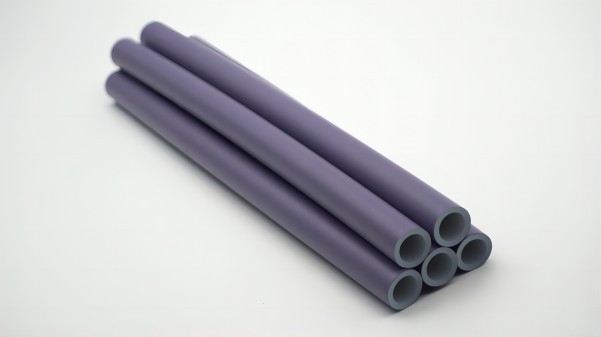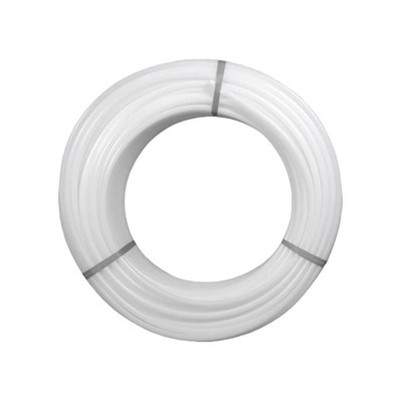How to reduce noise in pex - a pipes?
Leave a message
Noise in PEX - A pipes can be a nuisance in both residential and commercial plumbing systems. As a PEX - A pipe supplier, I understand the importance of providing solutions to this common problem. In this blog, I'll share some effective ways to reduce noise in PEX - A pipes.
Understanding the Causes of Noise in PEX - A Pipes
Before we delve into the solutions, it's crucial to understand why noise occurs in PEX - A pipes. There are several factors that can contribute to this issue.
Water Hammer
Water hammer is one of the most common causes of noise in plumbing systems. It happens when the flow of water is suddenly stopped or changed direction. For example, when a faucet is turned off quickly, the momentum of the water causes it to slam against the pipe walls, creating a loud banging sound. In PEX - A pipes, water hammer can be more pronounced due to the flexibility of the material.
Expansion and Contraction
PEX - A pipes expand and contract with changes in water temperature. This movement can cause the pipes to rub against the surrounding structures, such as joists or studs, resulting in rattling or creaking noises.
High - Velocity Water Flow
When water flows through the pipes at high speeds, it can create a whistling or hissing sound. This often occurs in systems with inadequate pipe sizing or when the water pressure is too high.


Solutions to Reduce Noise in PEX - A Pipes
Install Water Hammer Arrestors
Water hammer arrestors are devices designed to absorb the shock waves created by water hammer. They typically consist of a sealed chamber filled with air or a spring - loaded piston. When water hammer occurs, the arrestor compresses the air or moves the piston to absorb the energy, preventing the loud banging noise. Installing water hammer arrestors at strategic points in the plumbing system, such as near faucets, valves, and appliances, can significantly reduce noise.
Proper Pipe Support
Ensuring that PEX - A pipes are properly supported is essential to prevent noise caused by expansion, contraction, and vibration. Use pipe hangers or straps at regular intervals to secure the pipes to the surrounding structures. The spacing of the supports depends on the pipe size and the installation location. Generally, horizontal pipes should be supported every 32 inches, while vertical pipes should be supported every 6 - 8 feet. Make sure the supports are tight enough to hold the pipes in place but not so tight that they restrict movement.
Insulate the Pipes
Pipe insulation can help reduce noise by dampening the sound waves and preventing the pipes from vibrating against the surrounding structures. There are various types of insulation materials available, such as foam rubber, fiberglass, and polyethylene. Wrap the insulation around the pipes, making sure to cover all exposed sections. Pay special attention to areas where the pipes pass through walls, floors, or ceilings, as these are common sources of noise transmission. Insulation can also help with energy efficiency by reducing heat loss or gain in the pipes.
Adjust Water Pressure
High water pressure can contribute to noise in PEX - A pipes. Use a pressure gauge to measure the water pressure at the main supply line. The ideal water pressure for most residential plumbing systems is between 40 - 80 psi. If the pressure is too high, install a pressure - reducing valve (PRV) to regulate the pressure. A PRV can be adjusted to maintain a constant, safe pressure throughout the system, reducing the likelihood of high - velocity water flow and water hammer.
Use the Right Pipe Size
Proper pipe sizing is crucial for maintaining a balanced water flow and reducing noise. If the pipes are too small, water will flow at high velocities, creating noise. On the other hand, if the pipes are too large, the water flow may be sluggish, leading to sediment buildup and potential blockages. Consult a plumbing professional to determine the appropriate pipe size for your specific application. They will consider factors such as the number of fixtures, the distance from the water source, and the expected water demand.
Benefits of Using Our PEX - A Pipes
At our company, we offer high - quality PEX - A pipes that are designed to minimize noise and provide reliable performance. Our PEX Anti UV Pipe is resistant to ultraviolet rays, making it suitable for both indoor and outdoor applications. It has excellent flexibility, which allows for easy installation and reduces the risk of kinking.
Our PE - Xa Pipe for Plumbing Pipe is specifically engineered for plumbing systems. It has a smooth inner surface that promotes efficient water flow, reducing the likelihood of noise caused by high - velocity water. The pipe is also highly resistant to corrosion and scale buildup, ensuring long - term durability.
In addition, our PE - Xa Pipe NSF meets the strict standards set by the National Sanitation Foundation (NSF). This means that it is safe for use in potable water systems, providing peace of mind for homeowners and building managers.
Conclusion
Reducing noise in PEX - A pipes is achievable through a combination of proper installation techniques and the use of appropriate noise - reduction devices. By understanding the causes of noise and implementing the solutions outlined in this blog, you can create a quiet and efficient plumbing system. As a PEX - A pipe supplier, we are committed to providing high - quality products and expert advice to help you solve any plumbing issues. If you are interested in purchasing our PEX - A pipes or have any questions about noise reduction in plumbing systems, please feel free to contact us for a consultation. We look forward to working with you to meet your plumbing needs.
References
- "Plumbing Engineering: Design and Installation" by Stephen A. R. Taylor
- "Residential Plumbing Systems" by the American Society of Plumbing Engineers (ASPE)
- Manufacturer's installation guides for PEX - A pipes and related products




